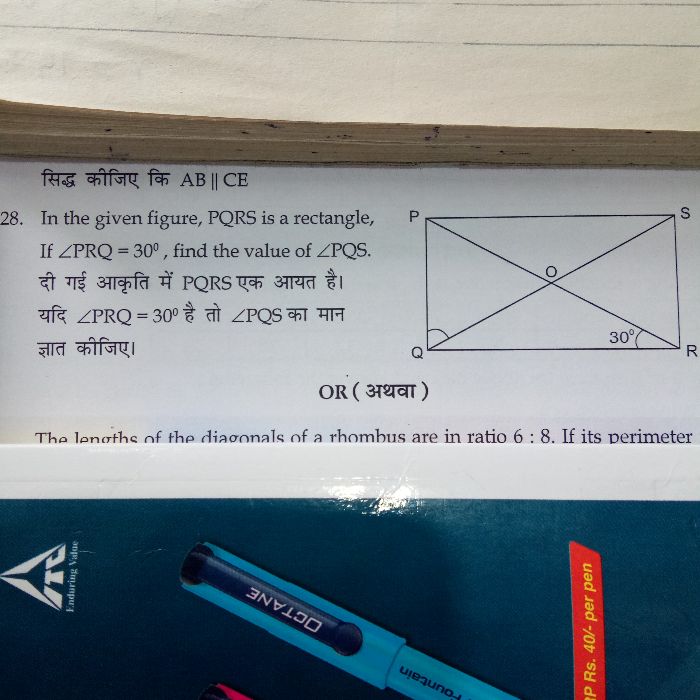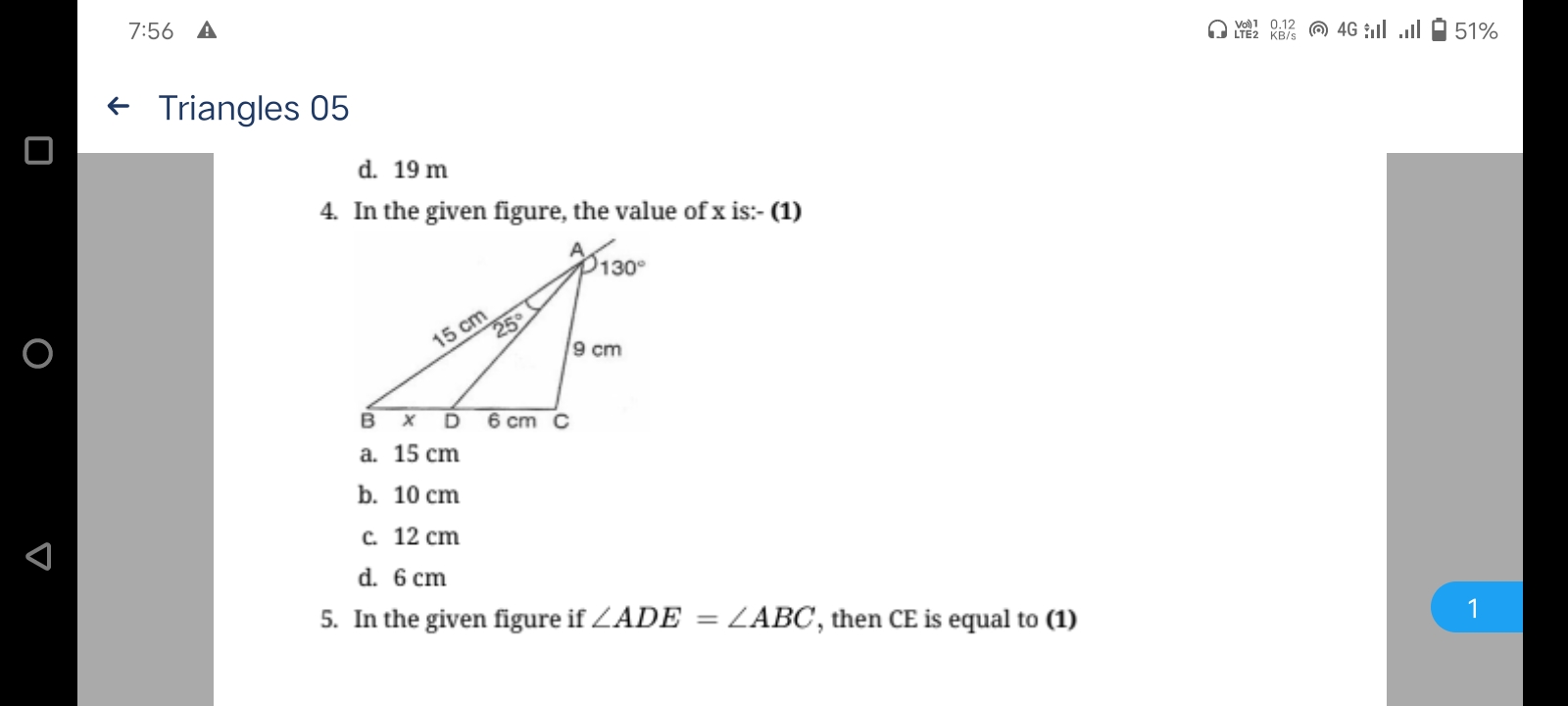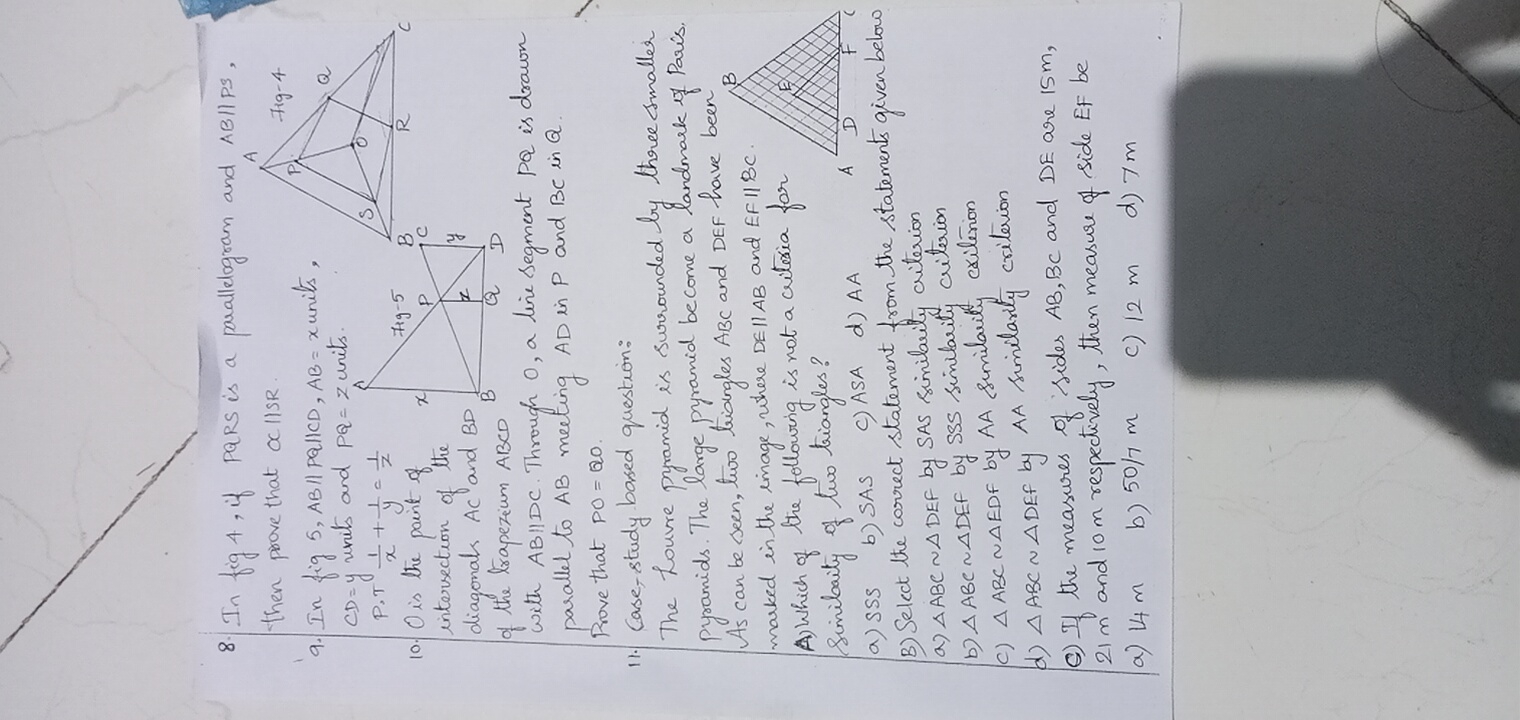CBSE Class 10 Answered
In ABCD, let d1 and d2 be the diagonals AC and BD, respectively. Construct a coordinate system so that A is the origin, B lies on the positive x axis, and C and D lies above the x axis. See the diagram below. Assume that AB is equal to DC and AD is equal to BC. We must prove that ![]() .
.
Let x be the x coordinate of B, let C have coordinates (x + x0, y) and D have the coordinates (x0, y). If x0 is 0 then the parallelogram is a rectangle.

Firstly, using the distance formula, let's solve for the length of the two diagonals, d1 and d2.

Now let's sum the squares of the diagonals:

Secondly, again using the distance formula, let's solve for the length of the two sides AB and AD.

Finally, we want to sum the squares of the sides and multiply by 2 (4 sides total, 2 of each length).
Thus, we have proven that the sum of the squares of the four sides of a parallelogram is equal to the sum of the squares of the diagonals.
















